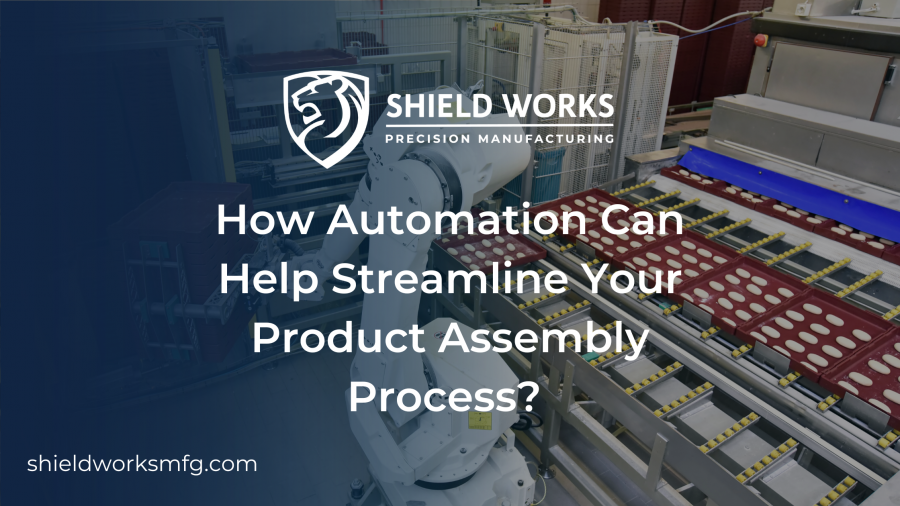How Automation Can Help Streamline Your Product Assembly Process?

Automation has become an integral part of numerous industries, revolutionizing processes and enhancing productivity. In the realm of product assembly, automation holds immense potential for streamlining operations and improving overall efficiency.
In this article, we will explore how automation can help optimize your product assembly process, allowing you to deliver high-quality products while minimizing costs and time.
Understanding Automation in Product Assembly
Automation in product assembly refers to the use of technology and machinery to perform repetitive tasks that were traditionally carried out by humans.
These tasks can include picking and placing components, tightening screws, performing quality checks, and packaging finished products.
By automating these processes, businesses can eliminate human error, increase production speed, and improve overall accuracy.
Benefits of Automation in Streamlining Product Assembly
- Enhanced Efficiency: Automation significantly improves the speed and accuracy of product assembly, resulting in increased output and reduced production time.
- Reduced Costs: By automating repetitive tasks, businesses can minimize labor costs, as well as reduce errors and rework expenses.
- Improved Quality Control: Automation ensures consistent quality control throughout the assembly process, reducing defects and enhancing customer satisfaction.
- Optimized Resource Utilization: Automated systems can utilize resources more efficiently, allowing businesses to allocate their workforce to more complex and strategic tasks.
- Worker Safety: By automating hazardous or physically demanding tasks, businesses can prioritize worker safety and minimize the risk of accidents or injuries.
Implementing Automation: Best Practices
When integrating automation into your product assembly process, consider the following best practices:
- Thorough Process Analysis: Identify the tasks that can be automated and evaluate their feasibility and potential impact on the overall process.
- Investment Planning: Determine the budget and timeline required for implementing automation, including equipment costs, training, and system integration.
- Collaboration with Experts: Consult with automation specialists and suppliers who can provide valuable insights and recommend suitable solutions for your specific needs.
- Gradual Implementation: Implement automation gradually, starting with smaller-scale projects to test and refine the process before scaling up.
- Training and Workforce Adaptation: Provide proper training to your workforce to ensure smooth adoption of automation technologies and address any concerns or resistance.
- Continuous Monitoring and Improvement: Regularly monitor the automated processes, gather data, and analyze performance to identify areas for further optimization.
Overcoming Challenges in Automating Product Assembly
While automation brings numerous benefits, it also presents challenges that businesses need to address:
- Initial Investment: The upfront cost of automation can be substantial, requiring careful financial planning and evaluation of long-term returns on investment.
- System Integration: Integrating automation systems with existing infrastructure and software can be complex and may require specialized expertise.
- Workforce Adaptation: Some employees may be resistant to change or fear job displacement. Providing proper training and transparent communication is crucial to address these concerns.
- Maintenance and Upkeep: Automated systems require regular maintenance and occasional upgrades, which should be factored into the overall cost and operational planning.
- Flexibility and Scalability: Ensuring that the automated systems are flexible and adaptable to future changes in product design or assembly requirements is essential.
Future Trends in Automation for Product Assembly
The field of automation is constantly evolving, and several trends are shaping the future of product assembly:
- Collaborative Robots: Collaborative robots, also known as cobots, are designed to work alongside humans, enabling safe and efficient collaboration in assembly tasks.
- Artificial Intelligence: AI-powered systems can analyze data, make decisions, and optimize assembly processes in real-time, leading to further improvements in efficiency and quality.
- Internet of Things (IoT) Integration: By connecting assembly line components and machines through IoT, businesses can gather real-time data for predictive maintenance and process optimization.
- Advanced Vision Systems: Vision systems equipped with advanced cameras and sensors can enhance quality control by detecting defects and abnormalities with high accuracy.
- Automation as a Service: Cloud-based automation platforms offer scalable and flexible solutions, allowing businesses to implement automation without significant upfront investments.
Automation is a powerful tool that can revolutionize the product assembly process, enabling businesses to streamline operations, improve efficiency, and deliver high-quality products to their customers.
To stay competitive in the rapidly evolving market, it is crucial for businesses to explore the potential of automation and implement it strategically in their product assembly workflows. Or you can choose to work with a manufacturer that has highly automated their production process, such as Shield Works, one with their own in-house facility and 18 years of industry experience, always looking to innovate their manufacturing expertise. Contact us today!
